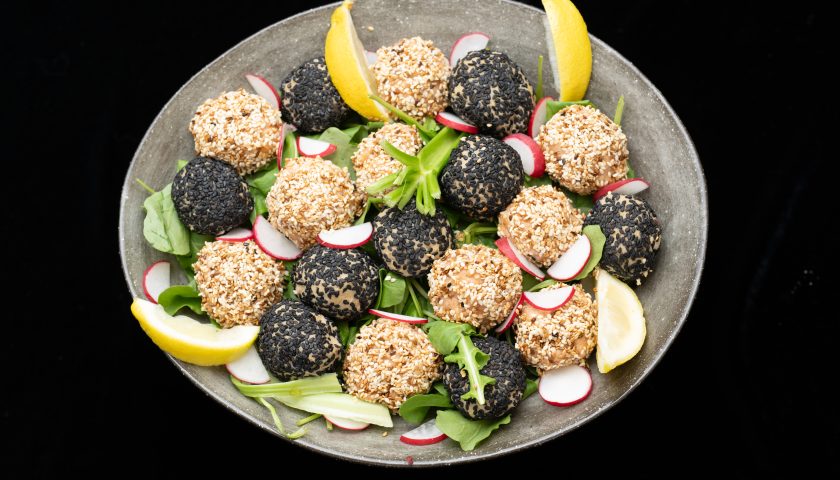Keeping Simchas Simple
By: Paula Levin
“The essence of a bar mitzvah is to take on the responsibilities of being a Jewish man!”
Whether it’s a bris, barmy, or batti; an engagement or wedding, celebrating a child’s simcha is a priceless gift! In our highly interconnected schools and communities, however, it’s easy to fall into the trap of trying to compete with the Jonesbergs, creating an event just like everyone else’s – but without their budgets! This can put families under financial pressure, add to their debt, and fuel envy – turning milestones into millstones. So let’s explore how to embrace the essence of a simcha and create a beautiful event where joy – rather than stress – is shared and thereby multiplied.
Devora[1] says she’s dreading arranging her second daughter’s bat mitzvah. “The memory of last year’s extravaganza is fresh in my mind. It is expected that one will hire a hall, photographer, decor lady, lighting guy, caterer, make-up artist, hairdresser, nail lady, dressmaker, and DJ. All this hullabaloo for a 12-year-old girl! It felt as if I was making a wedding with all I put into it. I can’t face doing it again. It shouldn’t be like this.” But Devora feels that there’s no way to get out of it, other than asking the school’s principal to create rules or policies to lower these lavish standards.
Moira created a fantastic bar mitzvah despite being on a very tight budget. “Firstly, we decided what we could realistically afford. I found out that brochas after shul are extremely expensive, so we decided not to have a brocha but rather a sit-down lunch straight after shul and limited this lunch to 60 people. This was much more meaningful as it was only close friends and family. We had the function at a basic venue which provided basic tables and chairs but had a lovely outside part with soccer courts, so the boys could run out and play. We catered the lunch and drinks ourselves and bought all the cutlery, glasses, and crockery from a discount place in America which my sister brought with her. All the table decorations were from a Gemach[2], except for simple balloons. It was an outstanding affair. We put money in a separate savings account, stuck precisely to our budget without being tempted to deviate and so, once all the guests had left, everything was paid for and we could now move on. No pressure of still paying this off!”
“It’s not about having less, it’s about needing less to feel whole.”
Ashley Jay[3] is an educational psychologist who works with families and children. “I find that the issue of giving children the simcha they want comes up a lot for parents – especially in the bar and bat mitzvah years. In many of our schools, we have children from wealthy families in the same classes as children whose parents have more modest means, as well as children on subsidies. It’s natural to compare simchas, and parents are afraid to disappoint their children,” she says. “Teaching a child to resist the urge to compare is like giving them emotional armour. It’s not about having less, it’s about needing less to feel whole – and that’s a lesson that will outlast any party. You may want to initiate a conversation with your child saying, “I’ve noticed some of the parties lately have been pretty fancy. It’s normal to compare, but I want us to remember – what we value most isn’t how flashy something looks. It’s who you are, how you carry yourself, and how you treat others. That’s what truly makes someone impressive – not the price tag.”
“I think it’s important to create awareness of the wider world from an early age so that children develop a deep sense of gratitude for how privileged they are,” explains Ashley. “This can be done by volunteering together for the Chev, Yad Aharon and Michael, and helping them choose old clothes and toys to give away to Hospice. This helps to mitigate children’s sense of entitlement and to build an awareness of the poverty in our community and in our country. Parents should not be worried about ‘traumatising’ their children by showing them the bigger picture, but they should be there to help them through any feelings that may come up. Our role as parents is to create emotional safety – which means helping our children learn how to manage big emotions, without feeling the need to avoid exposure to things that will trigger them. In grade six and seven when they are attending lavish barmis and battis, they might express jealousy about a friend’s event. It’s important to name the feeling without judgement, giving empathy before advice. Explain that we all feel these emotions and they are normal and natural. In addition, we need to model generosity of spirit for our children, the ability to be happy for others, and gratitude for what we have. We must be careful not to speak in an envious or scornful way about what others have or don’t have. It’s also really important to help your children develop ‘value lenses’ from an early age, helping them see that external validation in the form of ‘likes’ and popularity do not necessarily reflect reality. This means having lots of conversations about fads, trends, and brand names, highlighting that while these are fun and nice to have, they don’t reflect who you are as a person. Our value as humans comes from who we are and how we treat others. We also need to teach children the value of money and how it correlates with hard work. When things come too easily to children without awareness and appreciation, they become spoiled. Let’s make sure that children know the difference between what a celebration looks like, and what it marks – making sure the emphasis is in the right place. Only then, let them help them co-design a party that reflects their personality, rather than doing what everyone else has done – which all becomes one blur of copy & paste.”
Approaching the subject from another angle, what obligations – if any – do wealthier families have when celebrating a simcha? Should they restrict their expenditure so as not to put pressure on others? The answer is far from black and white but the Torah commandment to love your fellow as yourself includes showing concern for the financial situation of others (beyond the commandment to give charity).[4] Rabbi Yehuda Hanassi, the redactor of the Mishnah, was also the wealthiest man in his generation. Seeing that people were incurring massive financial burdens in order to bury their loved ones in the finest clothing, he insisted on being buried in simple shrouds, giving relief to those with less means. Because he took a stand, this custom became the norm and in fact is still in effect until today! Another example of concern for the financial welfare of our fellow community members is the fact that the Kohein would tell a family to first remove their belongings from the house before he would declare it ritually impure. This is because if the belongings were still inside, they too would be considered impure and might have to be destroyed, causing financial loss.[5]
Carmen shared that as one of the wealthiest families in her daughter’s class, they consciously chose to have a modest bat mitzvah so as not to raise the bar for others. “We then used the money we could have spent to donate to the Chev and my daughter helped pack food parcels for Yom Tov. We felt that this would be far more in keeping with the essence of becoming a Jewish woman, than splurging on party.” She also suggests that instead of trying to do the same thing as everyone else, parents should have a conversation with their child about what elements would reflect their personality.
“Raising the bar creates financial pressures for parents, social anxiety for kids, and, in excess, undermines the essentially spiritual nature of the simcha.”
In many communities, the rabbi or school leadership offer guidelines or put protocols in place to protect families from excessive expenditure on simchas. The Gerrer Rebbe, for example restricted service providers from selling expensive spodiks (traditional headgear) to grooms[6], while many communities in Israel don’t allow classmates to be invited to bar or bat mitzvahs to reduce peer pressure. Rabbi Shlomo Kolko is Principal of Shaarei Torah Primary School which encourages school families to keep bar or bat mitzvahs at a modest standard, whether regarding venue, entertainment, size of invitation list, etc. “Experience shows that tapping into the correct celebratory nature of the event without the unnecessary extravagance, creates a more beautiful and meaningful experience. Some parents specifically asked us for guidelines and most families are happy to conform, although policies will never be without their detractors. Raising the bar creates financial pressures for parents, social anxiety for kids, and, in excess, undermines the essentially spiritual nature of the simcha,” he says.
Rabbi Yehuda Stern is the Community Rabbi of Sydenham Shul, one of Johannesburg’s largest synagogues. The community comprises hundreds of families across the financial spectrum. Rabbi Stern finds that simchas have become more modest in recent years, with many people choosing a communal brocha or sometimes a seuda shlishis leading into a musical havdalah rather than a dinner dance which can cost over R200 000, with food, decor, a band, and all the bells and whistles. “I think it’s really special when a family who has the means chooses to share their simcha with the community, treating them to extra special food and spreading their joy beyond their immediate circle. This adds so much to a shul, connecting people together, as opposed to an exclusive, invite-only event,” he says. “It’s also important to think about where costs can be cut and where they shouldn’t. Sometimes I find that in the interest of saving a few thousand rands, a family buys an entry-level pair of tefillin which are not designed to last a lifetime. That money could perhaps be saved elsewhere, because at the end of the day, tefillin speaks to the essence of the bar mitzvah – unlike all the expenses that come with an event. Rabbi Yossy Goldman tells the story that his father was far away from home at yeshiva when he became bar mitzvah. His parents sent him a pair of tefillin with a note to say “mazel tov on your bar mitzvah”, and that’s ‘all’ he got. He explains that some people might find this sad, but in fact, this reveals what the essence of a bar mitzvah is: to take on the responsibilities of being a Jewish man!”
Of course, even the external parts of a simcha have their place, says Rabbi Stern. “There’s something very beautiful about spending money on what is a spiritual milestone.” The party can add to the joy of the occasion and ensure that something spiritual and holy also leaves a sweet taste in one’s mouth. This is why we throw sweets after the boy’s aliyah, why we put honey on the Hebrew letters while teaching a child to read, why we give children chanukah gelt, and why there are so many sweets and prizes dished out at children’s service. “We want our children to feel that Torah is sweet, that authentic Jewish life is joyful and that mitzvahs are fun, positive, and happy. In many shuls, not only does the food disappear after the bar or bat mitzvah, but so does the child! So before the simcha, I have a conversation with the family and we talk about how to ensure the continuity of the simcha so that it’s not about the weekend but about a way forward. The essence of the simcha can endure for life when a family honours this milestone by taking on continuous growth in a specific area. I suggest to take on one thing that, years down the line, you can say started at the bar or bat mitzvah. Some fathers and sons have chosen to go to shul together or put on tefillin together on a Sunday, some mothers and daughters have chosen to light Shabbat candles every week, or if they already did so, to make sure they light on time. Some have set aside time to learn Torah together once a week or to visit Sandringham Gardens. Whatever it is, this touches the essence of what a simcha is, using its power and momentum to fuel a lifetime of growth. A new tradition that some shuls are doing is to sit down and “farbreng” at a small table with parents, grandparents, aunts, uncles, and close family after the brocha. Everyone takes turns sharing anecdotes, blessings, words of wisdom and advice, and praise for the child. This is the kind of thing that can be very real and connecting, meaningful and memorable for the child.”
Ultimately, perhaps it’s good to remember that rather than trying to create a simcha that other people remember – our attention should be on what will make the celebration memorable to ourselves and our children. Of course, this may be different for everyone, but as the saying goes: “People may forget what you said, they may forget what you did, but they will never forget how you made them feel.” So, let’s celebrate our children’s milestones by letting them feel how much we love them, how unique and irreplaceable they are, and how much they matter.





